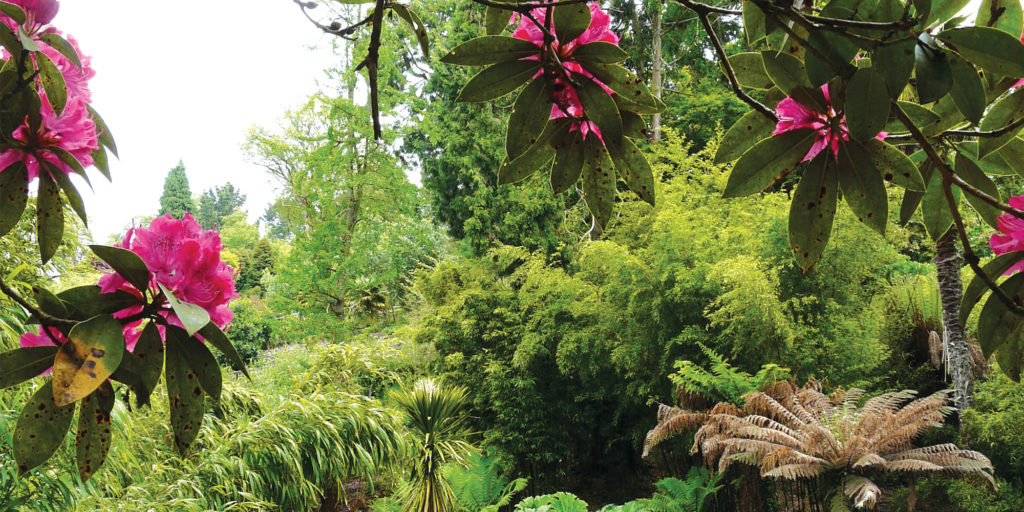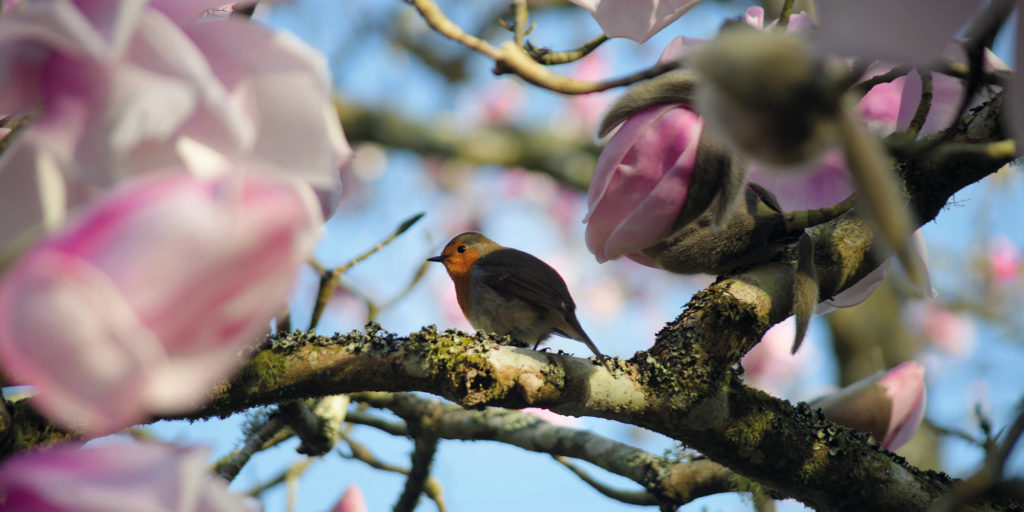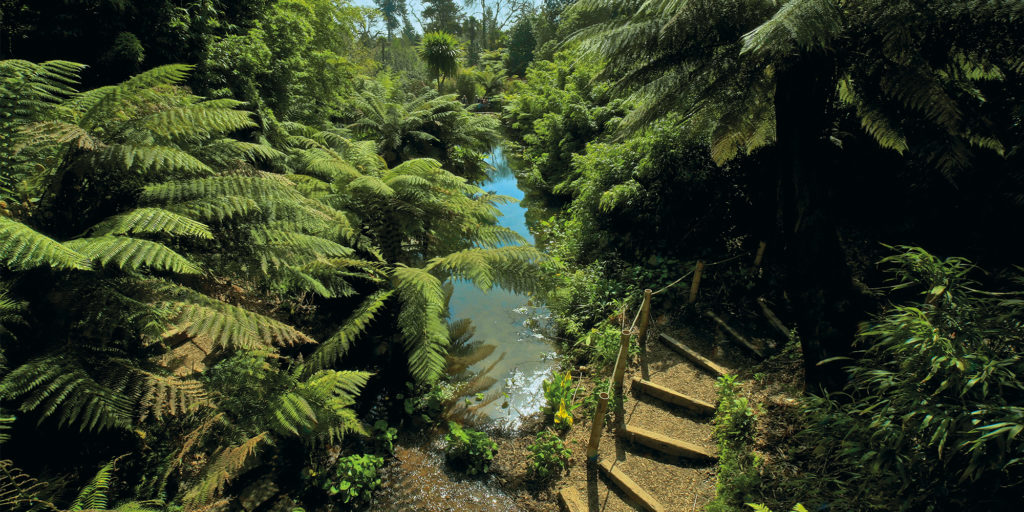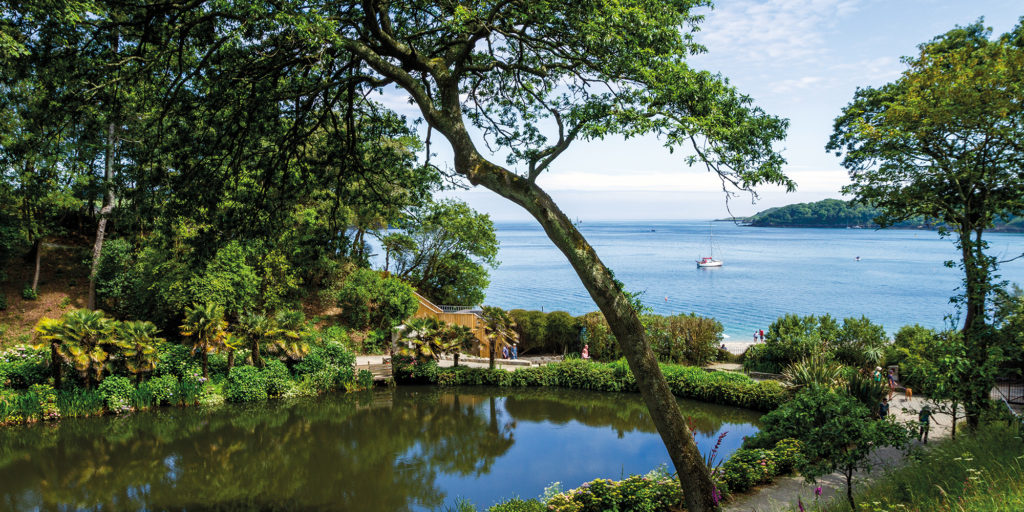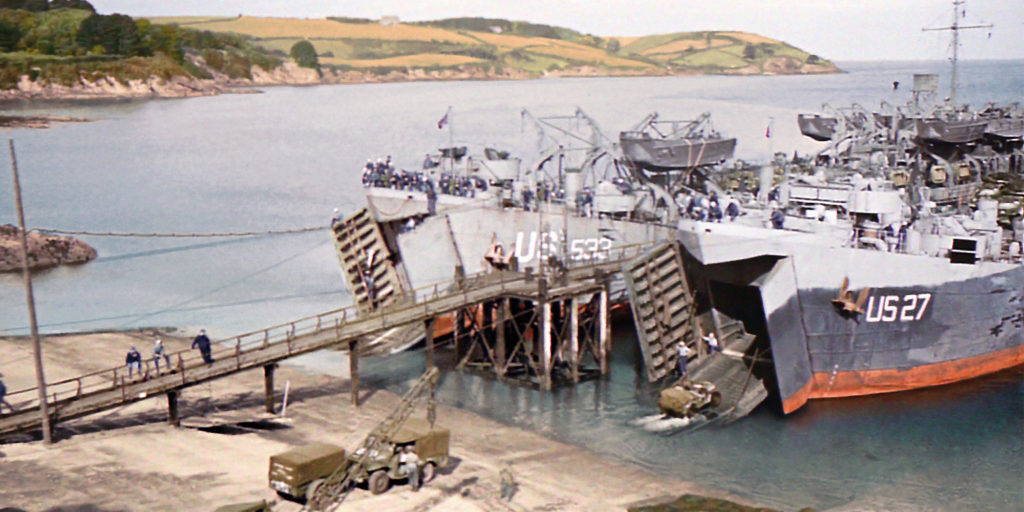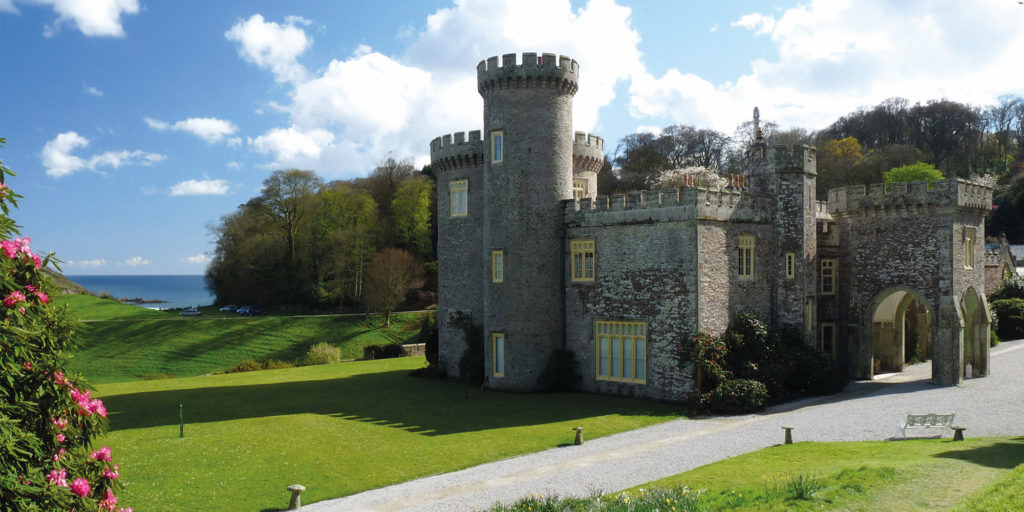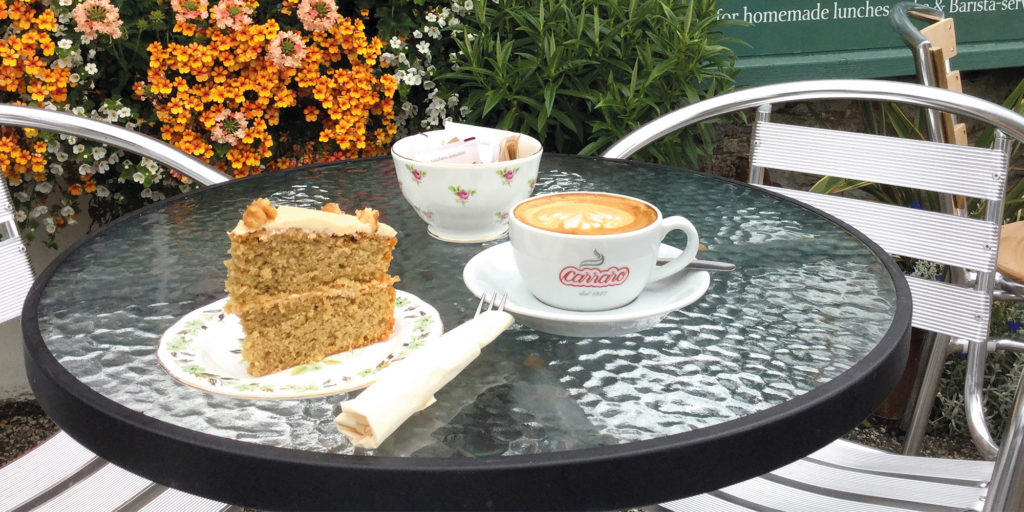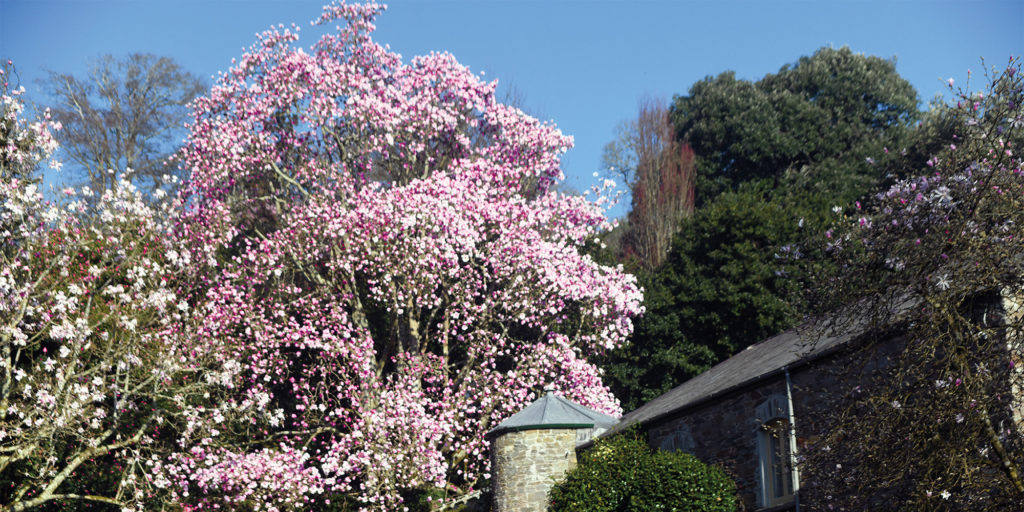

History and horticulture
Cornwall’s finest gardens are replete with tales that echo from the annals of history, many of which reverberate well outside of the horticultural sphere.
We start at The Lost Gardens of Heligan near St Austell. First built during the 12th century, Heligan Manor has been the seat of the Tremayne family since 1569. From the late 18th and into the 19th century the gardens began their development. In 1851, Heligan’s earliest Rhododendrons were secured from British botanist and explorer, Sir Joseph Dalton Hooker, who collected them during his expedition in India from 1847 to 1851. Hooker’s story is a fascinating one too, making numerous voyages to far-flung regions that included the Antarctic, India, Palestine, Morocco and the Western United States. He was also the closest friend of Charles Darwin, and the 20-year Director of the Royal Botanic Gardens, Kew (www.kew.org).
In the early 1900s the gardens were at their zenith, however in just a few years, they found themselves lost beneath a veil of bramble and ivy after the estate’s workforce left to fight in the First World War. Many of them, sadly, would never return, however their signatures can still be found on the wall in the Thunderbox Room, an evocative reminder of the catastrophe of war.
The rest of the 1900s saw a demise in what had, for centuries, made Heligan great: the house, between 1916 and 1919, was used as a hospital for British Army Officers, then from 1929 to 1970 it was rented out, with the exception of the Second World War, when it was occupied by American Army Officers. Later converted into flats and sold in 1973/74, it wasn’t until 1990 that the derelict, once great gardens were rediscovered by Tim Smit and Tremayne descendant, John Willis.
Since that moment, over the course of the last 29 years, the restoration at Heligan has been tremendous. Visiting now, there are more than 200 acres of garden paradise to discover, perfect for explorers, wildlife and plant lovers; following winding paths that were lain over two centuries ago. Heligan is a garden for all seasons, with so much to explore that we simply don’t have the pages to cover it, guaranteeing visitors a unique experience whatever the time of year.
Did you know?
In 2008 Heligan was granted National Collection Holder status by Plant Heritage, thanks to its excellent collection of veteran Camellias and ancient Rhododendrons.
Caerhays: the Chinese connection
Until the turn of the 20th century Caerhays Estate had no real garden; the 19th century plant introductions from hunters such as Joseph Rock, Hooker, Abbe Delevay and the Lobb brothers, from China and South America, were largely absent. It was only after 1900 that Caerhays came into its own as a premier British garden, and the first plants of many new species – formerly unknown in Western Europe – can still be seen today more than a century on.
The gardens here stem from the work of two great Chinese plant hunters: Ernest Henry Wilson and George Forrest, who risked their lives collecting plant seeds from this most far flung of nations.
J.C. Williams, who owned Caerhays, bought his first 25 Chinese Rhododendrons from Exeter’s Veitch Nursery in 1903, specimens which had been collected by E.H. Wilson. By 1906, more than 50 new species of Rhododendron were being planted and the creation of the garden as we see it today was well underway.
Of course, new additions from across the globe were highly coveted and therefore the source of much excitement, but the risks taken by the plant collectors cannot be understated. In Szechwan and Yunnan, disputes were still being resolved with bows and arrows, and the Caerhays website highlights an incident that saw George Forrest narrowly escape a gruesome fate at the hands of indigenous tribesmen.
In 1911, George Forrest began work-proper for J.C. Williams and between 1912 and 1915, he embarked on his third Chinese exhibition, funded entirely by his employer – the equivalent of £400,000 today! As well as Rhododendrons, Forrest’s collections included an array of other plants, including Acer, Magnolia, Michelia and Manglietia, to name but a few; it wasn’t long before thousands of packets of seeds began to arrive at Caerhays, a steady stream that was largely uninterrupted by the outbreak of the First World War.
The sheer volume of discoveries made by Wilson and Forrest, even today, is amazing to comprehend, and when you consider how many of their seeds failed to germinate, it’s possible that there are many more still waiting to be discovered.
Did you know?
Open to the public for 100 days from mid-February to early June, the gardens are now closed until next year, so be sure to plan a trip into your 2020 itinerary!
Trebah Garden: Operation Neptune
Trebah dates back to the Domesday Book of 1085, recorded as the property of the Bishop of Exeter. Over the centuries it has changed ownership a number of times, including wealthy Quaker family, the Foxes, who pioneered the garden, as well as world renowned racing driver, Donald Healey CBE, to name just a few. But it’s the integral role that the village of Mawnan Smith and Polgwidden Cove (Trebah beach) played in the staging of Operation Neptune – codename for Operation Overlord: the WWII Normandy landings – that’s really grabbed our attention.
We pick up the story in 1943, when American troops had started to arrive in Mawnan Smith. Something big was about to happen and the locals, of course, were ready to play their part. In order to make the village and beach ‘army ready’, the approach to the village, once a single track, was bulldozed and its hedges pushed back, opening up the road. Roadblocks were set up and civilians, without the correct permit, were unable to pass. Services were installed too, like running water and electricity, something that would make a big difference to the villagers after the war.
Then the troops began arriving in their droves: convoy after convoy of jeeps and carriers bringing American GIs to what, until then, had been a quiet corner of coastal Cornwall. By June 1944, the 29th Infantry Division had arrived, made up of thousands of recruits from various eastern states in the US, highly trained under the watchful eye of General Charles H. Gerhardt.
As is only natural, the village pub – the Red Lion – became a popular haunt for the troops, lifting morale and coming to life with all kinds of new musical styles that the Americans brought over with them.
With dug outs created in the lower part of the garden and a sturdy concrete road constructed down to the beach (across a local farmer’s field), the beach itself was transformed into a naval operations base, providing upper deck access to the huge ships that would land here. No wonder, then, that it accrued the nickname ‘Yankee Beach’!
Finally, on 31st May 1944, after years of intense training and months of guarding the Helford river, the 29th Infantry Division got their orders and began preparations to leave. Embarking towards the shore from their sealed camps (troops were not allowed to leave, minimising the risk of the D-Day preparations being uncovered), they made their way aboard the huge 100-metre long Landing Ship Tanks (LSTs).
It all went off without a hitch; vehicles were reversed on in order to drive forward onto Omaha Beach and then, as the troops lined up at their designated sections, they received the order: “29…let’s go!” And go they did.
The men of D-Day; the men of the 175th Regiment of the 29th Infantry Division of the US Army fought in what has been described as the ‘greatest show on Earth’, landing on and taking Omaha Beach – one of the deadliest of the five landings. By welcoming the American GIs, Trebah and Mawnan Smith provided the war effort with one of Operation Overlord’s most important staging points, doing their bit to ensure the success of the largest seaborne invasion the world has ever seen.
Discover more
With adventure play areas, children’s trails and a dog-friendly garden, as well as 100-year old Rhododendrons, Magnolias, Camellias and thriving plants usually found in the southern hemisphere, Trebah is a true horticulturalist’s haven.
Spruce up your garden
If you’re feeling inspired to conjure up your own work of horticultural magic, Cornwall has some fantastic garden centres and nurseries to help you do just that. Trevena Cross in Breage, for instance, is home to its own 32-acre nursery, growing 90% of the plants it sells on site (read more here.). Or, if you’re on the hunt for one of the rare specimens found in the Great Gardens of Cornwall, Bodmin Nursery is a haven for plant seekers (click here to find out more).
Discover more
In the mood to explore Cornwall in bloom? If so, be sure add some of these superb gardens to your summer itinerary:
Eden Project
edenproject.com
Glendurgan Garden
nationaltrust.org.uk/glendurgan-garden
Trewidden Garden
trewiddengarden.co.uk
Enys Gardens
enysgardens.co.uk
Trevince
trevince.co.uk
Tregothnan
tregothnan.co.uk
Lamorran House Gardens
lamorrangardens.co.uk
Morrab Gardens
morrabgardens.org
Boconnoc House & Estate
boconnoc.com
Tanglewood
tanglewoodmaycontainnuts.co.uk
Terence Coventry Sculpture Park
terencecoventry.com
